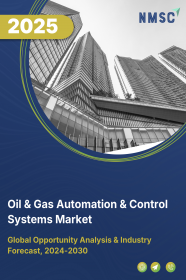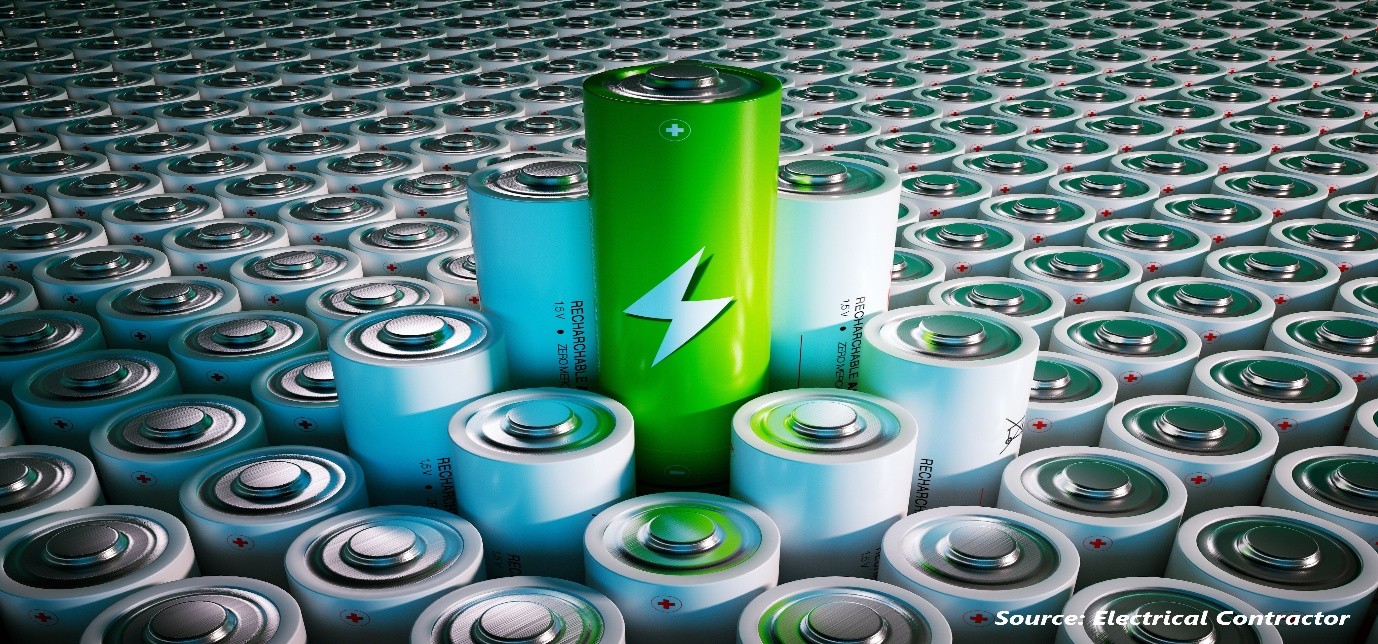
Oil & Gas Automation & Control Systems Market by Technology (Distributed Control System (DCS), Programmable Logic Controller (PLC), Safety Instrumented System (SIS), Supervisory Control and Data Acquisition (SCADA), Manufacturing Execution System (MES), and Others), by Application (Upstream, Midstream, Downstream, Onshore, and Offshore) - Global Opportunity Analysis and Industry Forecast, 2021 – 2030
Industry: Energy & Power | Publish Date: 07-Mar-2025 | No of Pages: 254 | No. of Tables: 128 | No. of Figures: 98 | Format: PDF | Report Code : EP417
US Tariff Impact on Oil & Gas Automation & Control Systems Market
Trump Tariffs Are Reshaping Global Business
Market Definition:
The global Oil and Gas Automation and Control System Market size was valued at USD 29.23 billion in 2020 and is predicted to reach USD 68.63 billion by 2030 with a CAGR of 8.4% from 2021-2030.
Oil & gas automation systems, also known as oilfield automation systems consist of various components that monitor the flow of oil & gas and control the valves accordingly. It mainly consists of sensors, which automatically open and close the valves for supply. These systems are technologically advanced and offer significant advantages over the conventional systems. They also provide information regarding damages, which can reduce potential accidents. Oil & gas automation & control systems are widely used across all major processes in oil and gas production including drilling, extraction operations and process control, logistics, supply chain, security, and retail operations. Automation provides operators immediate access to critical performance, status, and technical information, accelerating decision-making, troubleshooting, and performance efficiency.
Market Dynamics and Trends:
Automation helps oil and gas producers integrate information, as well as control, authorize, and provide security solutions in response to dynamic needs, which acts as the prime factor fuelling the oil and gas automation and control system market growth. Also, the process of drilling in oil & gas industry is very expensive and poses considerable risks for the workers. Automating the manual parts of this process, such as pipe handling and pressure drilling can significantly reduce these risks and speed up the entire drilling process, thereby saving variable costs. The demand for reducing oil prices has increased the need for oil and gas companies to stay competitive by reducing production costs. Therefore, oil companies are focusing on automating processes to reduce production costs, thereby creating demand for oil and gas automation and control systems.
In addition, automation also helps in the diagnosis and inspection of machinery. The offshore oil and gas industry uses dynamic positioning rigs to maintain the position of floating objects and drill ships, and drones to perform rig inspections and monitor gas emissions. These vehicles are remotely controlled and can even transmit data and video streams in real-time to a central location.
However, strict restrictions imposed to curb adverse effects on the environment and severe regulations on oil and gas drilling activities can restrain the market growth to some extent. On the other hand, the increasing demand for crude oil in various industries such as industrial activities and transportation is expected to create lucrative opportunities for the manufacturers in the near future.
Market Segmentations and Scope of the Study:
The global oil & gas automation & control systems market share is analysed on the basis of technology, application and geography. On the basis of technology, the market is segmented into Distributed Control System (DCS), Programmable Logic Controller (PLC), Safety Instrumented System (SIS), Supervisory Control and Data Acquisition (SCADA), Manufacturing Execution System (MES), and Other. On the basis of application, the market is divided into Upstream, Midstream, Downstream, Onshore, and Offshore. Geographic breakdown and analysis of each of the aforesaid segments include regions comprising North America, Europe, Asia Pacific, and the Rest of the World.
Geographical Analysis:
North America holds the lion's share of oil and gas automation and control system industry. This is majorly because, the U.S. is one of the largest consumers of crude oil and natural gas, accounting for almost 20% of world consumption. Also, the U.S. government aims to become the top oil and gas producer in the next few years.
Moreover, the oil and gas industry's dependency on automation has increased over the past decade, and the announcement of multiple rounds of industrial layoffs has reduced the number of skilled workers at oil and gas companies. This has made the U.S. oil companies increasingly dependent on automation to complete the process without delay.
Although the U.S. is still a net importer of crude oil, its growing status as an energy exporter and low-cost supplier may fundamentally change its position in the global energy landscape. In terms of cost reduction, the U.S. natural gas producers have been using automation to reduce and maintain costs. For example, SCADA is widely used in the upstream, midstream, and downstream oil and gas industries in the U.S. In the upstream sector, its role is usually shaped to mainly support remote data transmission.
However, this situation is expected to change due to the widespread use and diversification of SCADA in other industrial fields. In addition, American owners and operators recognize how IT-based automation can effectively solve the unique challenges of the upstream oil and gas industry.
However, Asia-Pacific is expected to show a steady rise in oil and gas automation and control system market. This is due to the development of automation, digital technologies and control systems that improved the efficiency and better monitoring of the oil and gas refining industries. The refining industry uses Distributed Control Systems (DCS) to reduce the possibility of downtime, potentially dangerous and disruptive conditions, because DCS includes operational redundancy.
The demand for refined fuels in the Asia-Pacific region is expected to exceed that of other regions in absolute terms, increasing by 17.2% between 2021 and 2026. Several refinery projects are being lined up in China and other countries in the region. Therefore, due to these factors the demand for automation in Asia-Pacific refineries is expected to support the market during the forecast period.
Competitive Landscape:
The oil and gas automation and control system market comprises of various market players such as Rockwell Automation Inc., Siemens AG, Schneider Electric SE, ABB Ltd., Honeywell International Inc., Robert Bosch GmbH, Texas Instruments Inc., Mitsubishi Electric Corporation, Yokogawa Electric Corporation and Emerson Electric Co. among others. Strategic alliances, acquisitions and innovations along with various R&D activities are key strategies used by the market players to maintain their dominance in the market.
For instance, in July 2021, Texas Instruments announced a new portfolio of high-performance microcontrollers (MCUs) designed to enhance real-time control, networking, and analytics applications at the edge. According to the company, through the new Sitara AM2x MCU, engineers can achieve 10x higher computing performance than traditional flash-based MCUs. Designed to close the gap between MCUs and processors, this high-performance portfolio enables designers to improve applications such as automation, robotics, automotive systems, and sustainable energy management.
Key Benefits:
-
The report offers quantitative analysis of the current oil and gas automation and control system market and estimations through 2020-2030, that assists in identifying the prevailing market opportunities to capitalize on.
-
The study comprises a deep dive analysis of the oil and gas automation and control system market trend including the current and future trends for depicting prevalent investment pockets in the infant oil and gas automation and control system industry.
-
The report contains information related to key drivers, restraints and opportunities and their impact on the oil and gas automation and control system market.
-
The report includes key market players, market share, which helps understand their competitive analysis.
-
The competitive analysis of the market players along with their market share in the market.
-
The SWOT analysis and Porter's Five Forces model is elaborated in the study.
-
Value chain analysis in the market study provides a clear picture of the stakeholder’s role.
Oil and Gas Automation and Control System Market Key Segments:
By Technology
-
Supervisory Control and Data Acquisition (SCADA)
-
Programmable Logic Controller (PLC)
-
Distributed Control System (DCS)
-
Machine Execution System (MES)
-
Safety Instrumented System (SIS)
-
Other Technologies
By Application
-
Upstream
-
Midstream
-
Downstream
-
Onshore
-
Offshore
By Geography
-
North America
-
U.S.
-
Canada
-
Mexico
-
-
Europe
-
UK
-
Italy
-
Germany
-
Spain
-
Netherlands
-
Rest of Europe
-
-
Asia-Pacific
-
China
-
Japan
-
India
-
Australia
-
South Korea
-
Taiwan
-
Vietnam
-
Rest of Asia Pacific
-
-
RoW
-
Latin America
-
Middle East
-
Africa
-
Key Players:
-
Rockwell Automation Inc.
-
Siemens AG
-
Schneider Electric SE
-
ABB Ltd.
-
Honeywell International Inc.
-
Robert Bosch GmbH
-
Texas Instruments Inc.
-
Mitsubishi Electric Corporation
-
Emerson Electric Co.
-
Yokogawa Electric Corporation
Report Scope and Segmentation:
|
Parameters |
Details |
|
Analysis Period |
2019–2030 |
|
Base Year Considered |
2020 |
|
Forecast Period |
2021–2030 |
|
Market Size Estimation |
Billion (USD) |
|
Market Segmentation |
By Technology (Distributed Control System (DCS), Programmable Logic Controller (PLC), Safety Instrumented System (SIS), Supervisory Control and Data Acquisition (SCADA), Manufacturing Execution System (MES), and Others), by Application (Upstream, Midstream, Downstream, Onshore, and Offshore) |
|
Geographical Segmentation |
North America (U.S., Canada, Mexico) Europe (UK, Italy, Germany, Spain, Netherlands, Rest of Europe) Asia-Pacific (China, Japan, India, Australia, South Korea, Taiwan, Vietnam, Rest of Asia Pacific) RoW (Latin America, Middle East, Africa) |
|
Companies Profiled |
Rockwell Automation Inc., Siemens AG, Schneider Electric SE, ABB Ltd., Honeywell International Inc., Robert Bosch GmbH, Texas Instruments Inc., Mitsubishi Electric Corporation, Yokogawa Electric Corporation and Emerson Electric Co. |

















 Speak to Our Analyst
Speak to Our Analyst





















